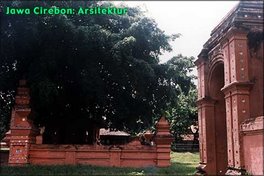 Albert Einstein lagi belajar di rumahnya daerah Princton, New Jersey Tahun 1938.
Albert Einstein lagi belajar di rumahnya daerah Princton, New Jersey Tahun 1938.Luar biasa... Walaupun usianya udah setua itu (Lihat gambar) Sang legendaris itu masih mau belajar, masih mau bersusah-susah memikirkan sesuatu yang orang lain belum berfikir ke arah sana.
Di lain pihak, aku seorang mahasiswa dengan usia masih muda, blum ada beban apapun, dll. Belajar adalah momok yang sangat menjemukan dan membuat otak kita bekerja cukup keras, knapa aku malas belajar? knapa kamu juga? knapa ya? Masih mudanya aja males gini, gimana tuanya? Pikir deh?
Mari kita BUDAYAKAN Belajar!!!!!
Jangan Sampai menyesal nanti.
Paper yang telah dibuat Om Albert :
The 1905 Papers
In the first of three seminal papers that were published in 1905, Einstein examined the phenomenon discovered by Max Planck, according to which electromagnetic energy seemed to be emitted from radiating objects in quantities that were ultimately discrete. The energy of these emitted quantities, the so-called light-quanta, was directly proportional to the frequency of the radiation. This circumstance was perplexing because classical electromagnetic theory, based on Maxwell's equations and the laws of thermodynamics, had assumed that electromagnetic energy consisted of waves propagating in a hypothetical, all-pervasive medium called the luminiferous ether, and that the waves could contain any amount of energy no matter how small. Einstein used Planck's quantum hypothesis to describe visible electromagnetic radiation, or light. According to Einstein's heuristic viewpoint, light could be imagined to consist of discrete bundles of radiation. Einstein used this interpretation to explain the photoelectric effect, by which certain metals emit electrons when illuminated by light with a given frequency. Einstein's theory, and his subsequent elaboration of it, formed the basis for much of quantum mechanics.
The second of Einstein's 1905 papers proposed what is today called the special theory of relativity. At the time Einstein knew that, according to Hendrik Antoon Lorentz's theory of electrons, the mass of an electron increased as the velocity of the electron approached the velocity of light. Einstein also knew that the electron theory, based on Maxwell's equations, carried along with it the assumption of a luminiferous ether, but that attempts to detect the physical properties of the ether had not succeeded. Einstein realized that the equations describing the motion of an electron in fact could describe the nonaccelerated motion of any particle or any suitably defined rigid body. He based his new kinematics on a reinterpretation of the classical principle of relativity, that the laws of physics had to have the same form in any frame of reference. As a second fundamental hypothesis, Einstein assumed that the speed of light remained constant in all frames of reference, as required by classical Maxwellian theory. Einstein abandoned the hypothesis of the ether, for it played no role in his kinematics or in his reinterpretation of Lorentz's theory of electrons. As a consequence of his theory Einstein recovered the phenomenon of time dilatation, wherein time, analogous to length and mass, is a function of the velocity of a frame of reference. Later in 1905, Einstein elaborated how, in a certain manner of speaking, mass and energy were equivalent. Einstein was not the first to propose all the elements that went into the special theory of relativity; his contribution lies in having unified important parts of classical mechanics and Maxwellian electrodynamics.
The third of Einstein's seminal papers of 1905 concerned statistical mechanics, a field of study that had been elaborated by, among others, Ludwig Boltzmann and Josiah Willard Gibbs. Unaware of Gibbs' contributions, Einstein extended Boltzmann's work and calculated the average trajectory of a microscopic particle buffeted by random collisions with molecules in a fluid or in a gas. Einstein observed that his calculations could account for brownian motion, the apparently erratic movement of pollen in fluids, which had been noted by the British botanist Robert Brown. Einstein's paper provided convincing evidence for the physical existence of atom-sized molecules, which had already received much theoretical discussion. His results were independently discovered by the Polish physicist Marian von Smoluchowski and later elaborated by the French physicist Jean Perrin.
http://www.doug-long.com/einstein.htm
Luar Biasa Bukan?

No comments:
Post a Comment